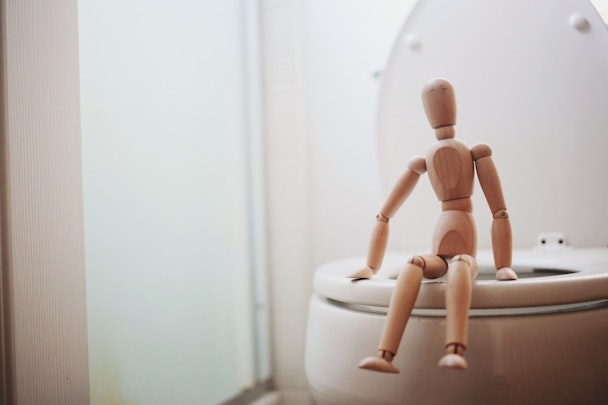Brand marketing lessons from the toilet cleaner war in India
The Drum has asked some marketing and creative folks to share what they think about the challenger brand marketing battle just launched by Domex to get a share of the toilet cleaner category from Indian consumers.

Domex and Harpic go head-to-head in the toilet wars
Health and hygiene have seen a surge like never before in the post-pandemic world. With Covid-19, products such as handwash soaps, sanitizers and surface disinfectants have seen a huge spike. As per reports, an additional 20m households used RB’s Harpic brand of toilet cleaners, which would have grown several times over as the infection gripped more and more people in the last few months.
The category has thus become much more attractive and also lucrative, making brands including Hindustan Unilever Limited (HUL) look again at strengthening their market play.
A few days back, HUL launched the ‘war of the toilet’, with its flagship home-cleaner brand Domex taking the open combat route against the market leader Harpic. In a not-so-veiled campaign, Domex called out the claims made by Harpic on toilet cleaning in a bid to educate Indian consumers.
Prabha Narasimhan, executive director and vice-president – home care (South Asia), Hindustan Unilever Ltd, said in a previous story with The Drum: “For a long time, consumers have been choosing a toilet cleaner as a force of habit without tending to question the right ingredients and technological aspects before choosing the product.”
India’s largest fast-moving consumer goods company hopes to change all that with its latest marketing war cry, and rewrite the rules of the category.
Marketers tell The Drum what they think of this simmering battle of comparative advertising in a rather unusual space, and where it may be headed.
Manisha Kapoor, secretary-general, The Advertising Standards Council of India (ASCI)
With the increased demand for health and hygiene products in the backdrop of the pandemic, it is only expected that the action in this space would heat up. Many household cleaning products have used protection from germs as a key promise for a few years, and in the current circumstances consumers are also looking for hard-working products.
From ASCI’s point of view, advertisements that contain comparisons, including where a competitor is directly named, are permissible as this is in the interest of vigorous competition and public enlightenment. However, advertisers must ensure that the basis for such comparison is fair and factual, and not chosen to confer an artificial advantage upon the advertiser. Such comparative advertisements must not unfairly denigrate or attack other advertisers. If done right, comparative advertising could help consumers make an informed choice.
Harish Bijoor, marketing consultant
There is plenty of action and money in toilet domination, with hygiene of every kind at an apogee point in the wake of the pandemic. The pandemic has put at center-stage our personal hygiene, and the hygiene of the things we use and the very air we breathe.
This is therefore a good time to focus on the toilet. At the beginning of the pandemic in India, immunity was the buzzword. It’s now time for toilet hygiene to capture the imagination of all concerned. So here comes the toilet war. This is the ‘Toilet Super Bowl’ at play! The toilet and indeed every space that requires a reliable quality of hygiene is a much more profitable space to operate in India today.
This is the return of the in-the-eye format of advertising where a brand takes on another brand. The smallest of differentiation is enough to fight the battle out. It is a fight for mind-share, and more importantly attention share. Expect the other brand to respond, and the entire category attention norms to climb high. This kind of attention war helps both brands, as well as the category.
Satbir Singh, founder and chief creative officer, Thinkstr
The shit has clearly hit the ceiling! Of the 30 crore households in India, a third is urban and even fewer live in metros and mini-metros. Conventional options like phenyl and acid are big. Also, self-cleaning is not a thing in an overwhelming number of cases. For a long time, the category fought phenyl and acid for increasing penetration. Leading brands have figured while that may be the long-term and uphill fight, in the short term biting at each other’s market share could be beneficial.
Soumitra Karnik, independent creative consultant and former chief creative officer, Dentsu India
Competitive advertising is usually very effective and does the job of drawing in the attention of the consumers while forcing them to re-evaluate their present choice of product. It is like having a front-row view of a courtroom trial where the most compelling argument wins. It pushes everyone to produce what’s better than the competition.
Due to lockdown, people are spending more time inside their homes so one is more aware of a stinky toilet than when they are outside, say at work. Not to mention more usage of the toilet than pre-Covid times. This is why Domex brought in Fresh Guard, which promises to last up to 100 flushes and removes bad odor. It is hugely relevant and has kept the brand’s nose in the air, so to speak. In this case, Harpic, which is a leader, got sucker-punched by Domex. I bet there will be a comeback by Harpic. If not, Domex won’t pull back its punches – until Harpic comes with a better feature and puts a lid on Domex.
I was fortunate to be a part of the cola-wars advertising. It kept everyone on their toes, and the people kept asking for more and more.

